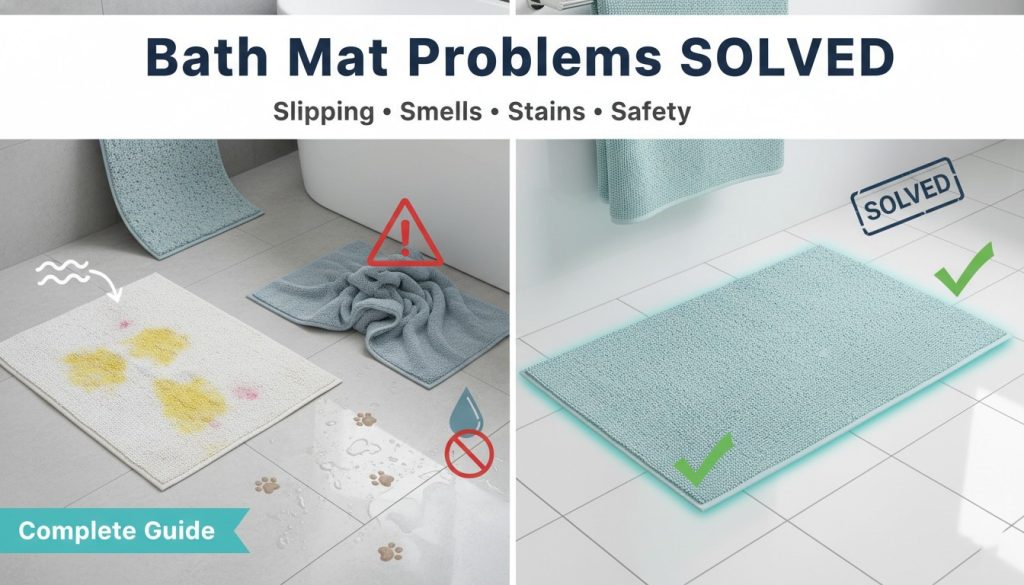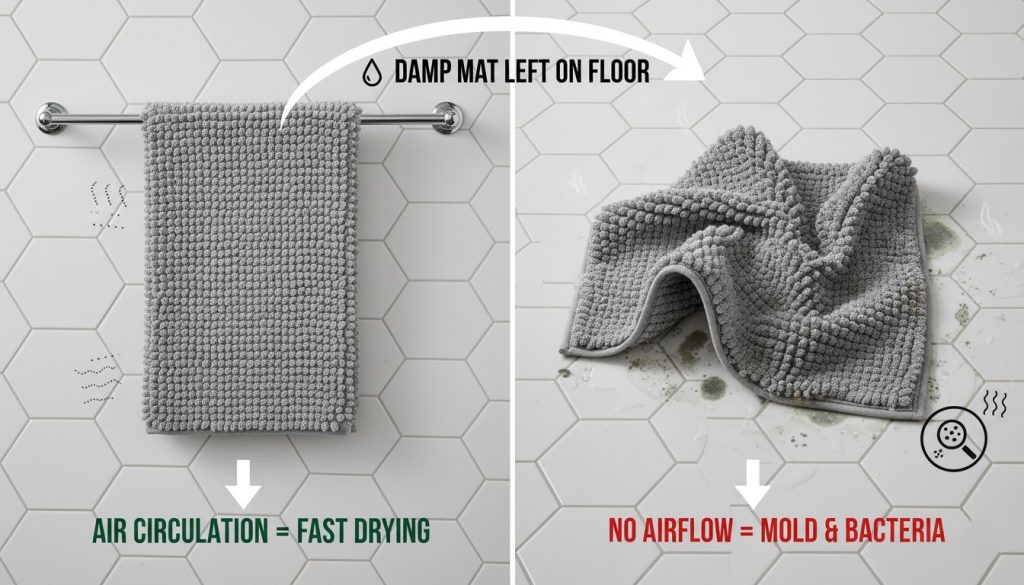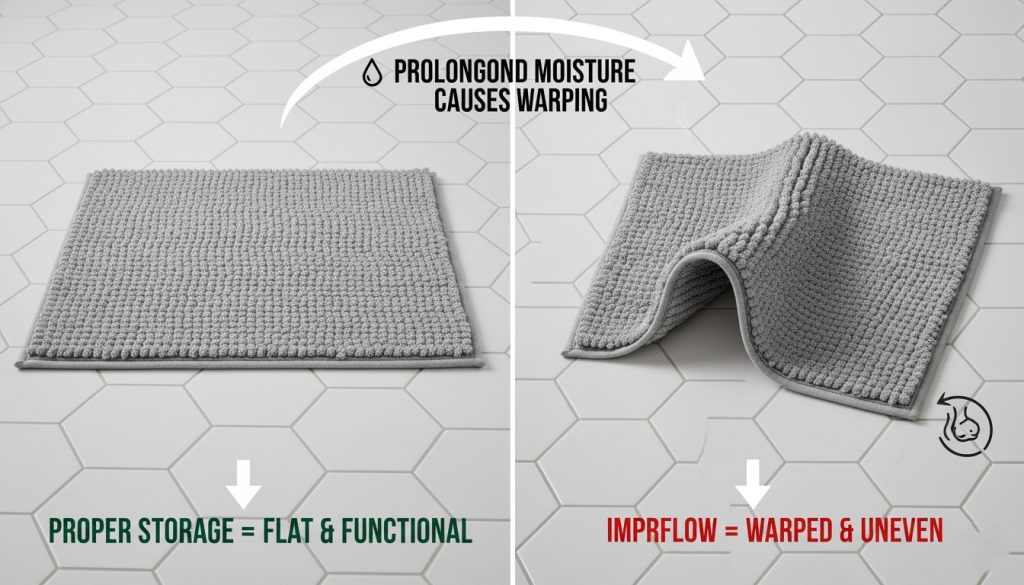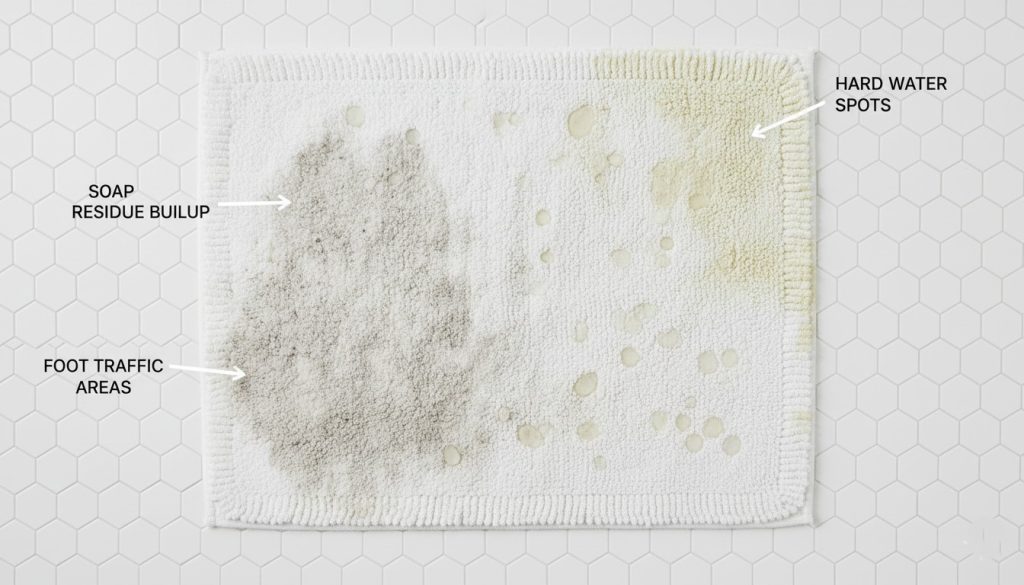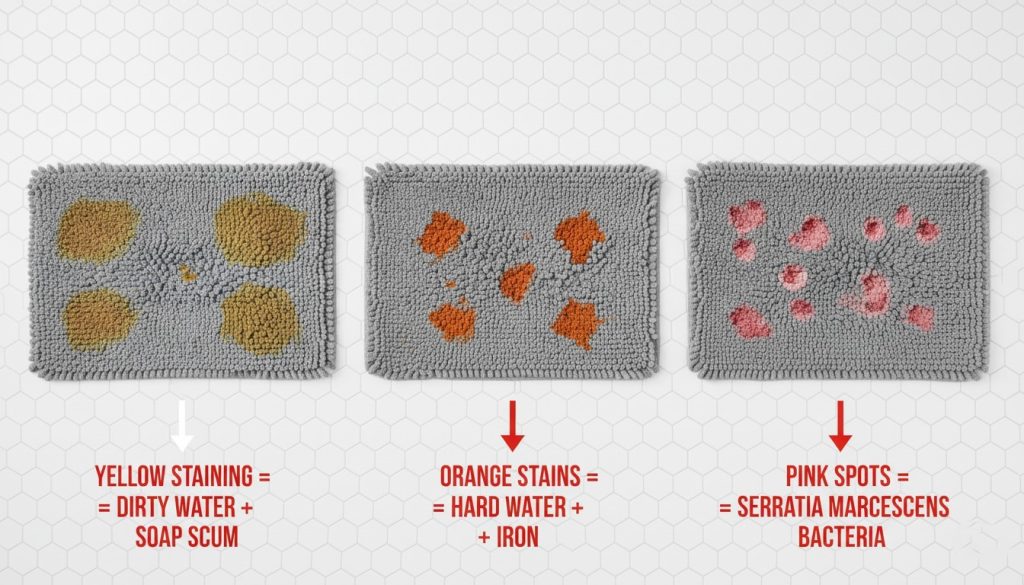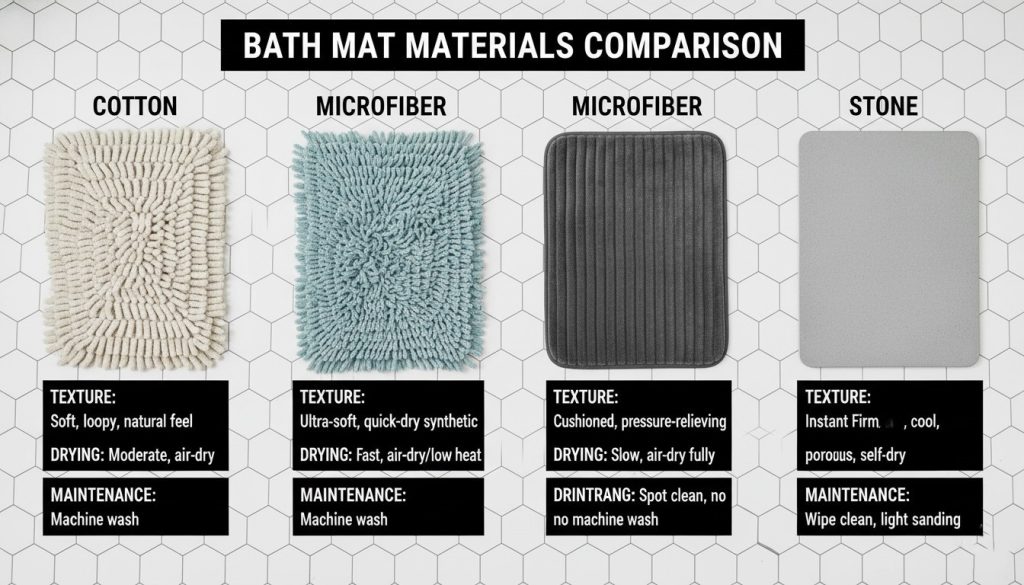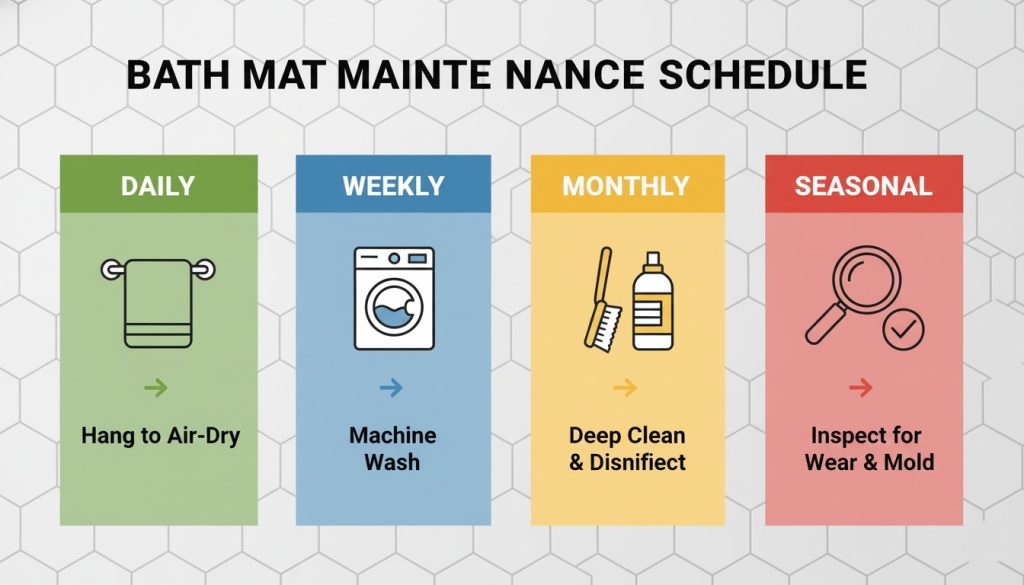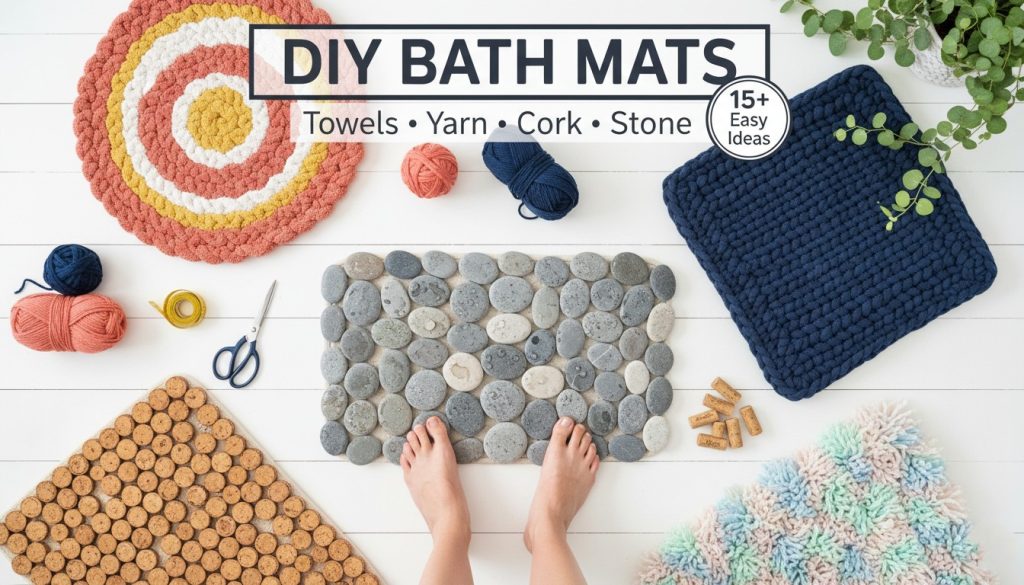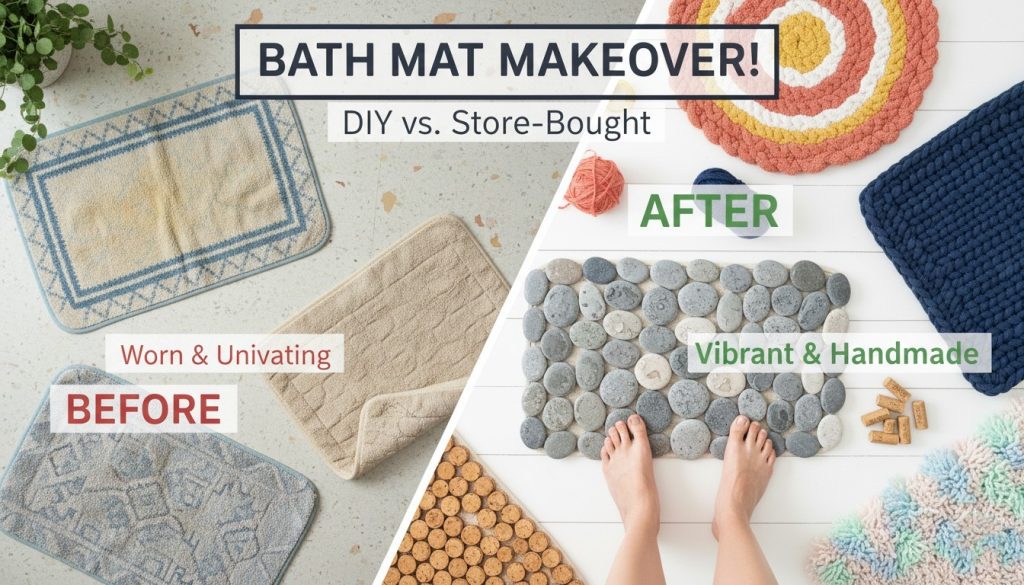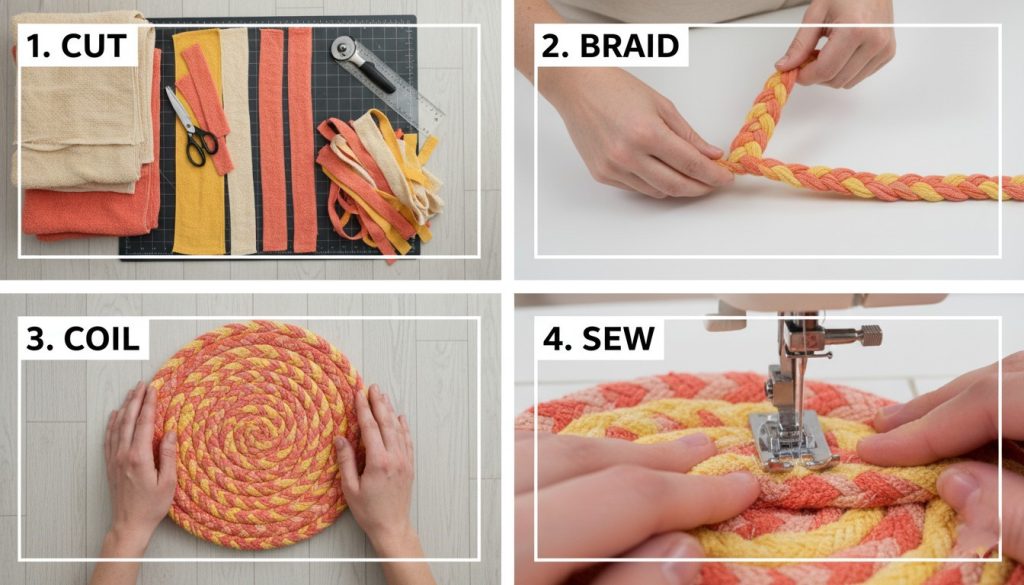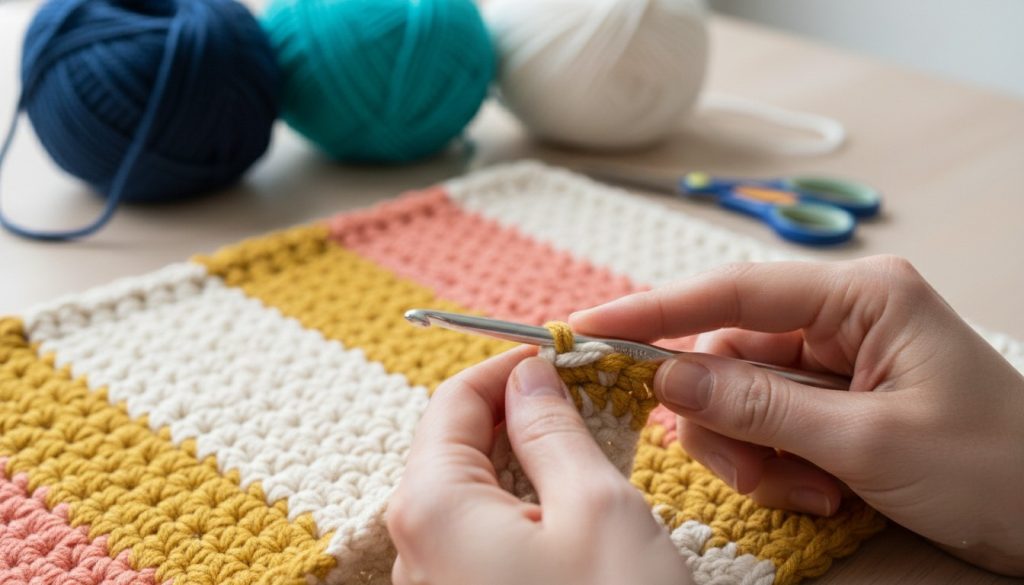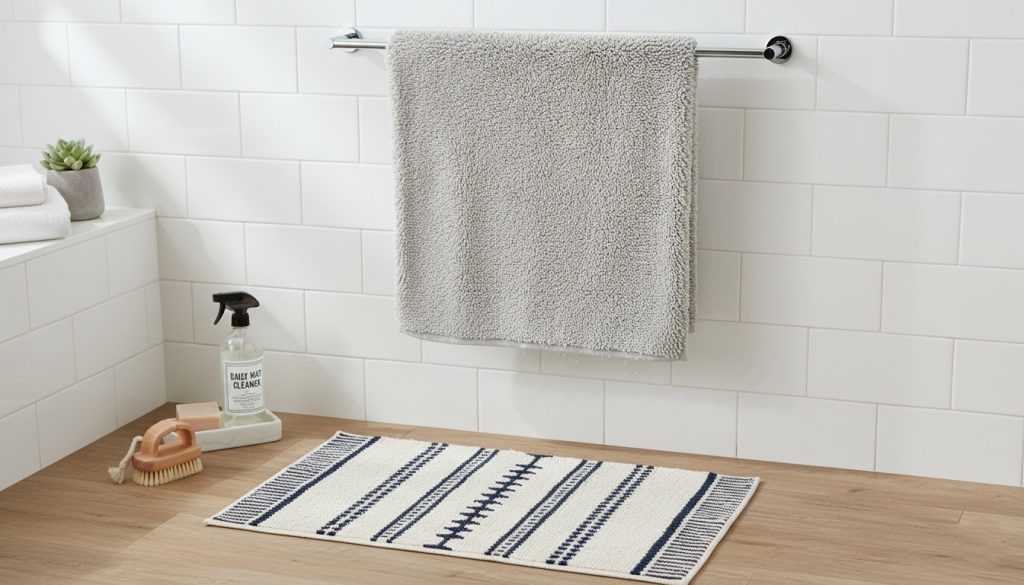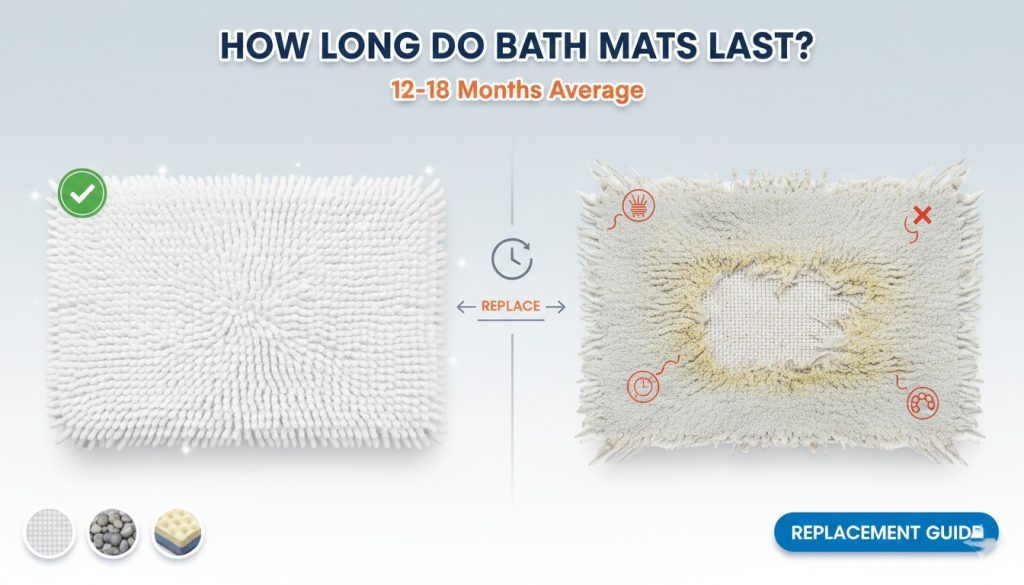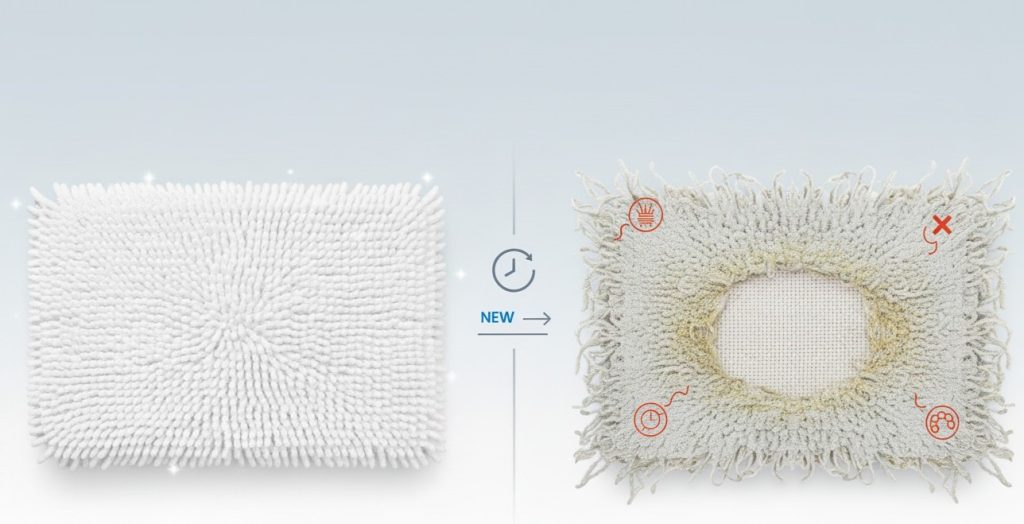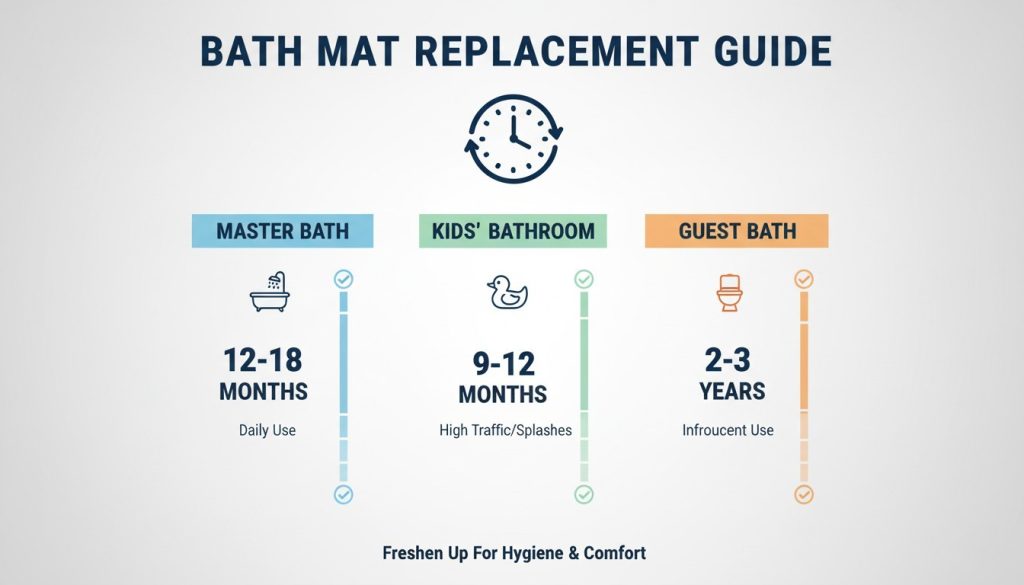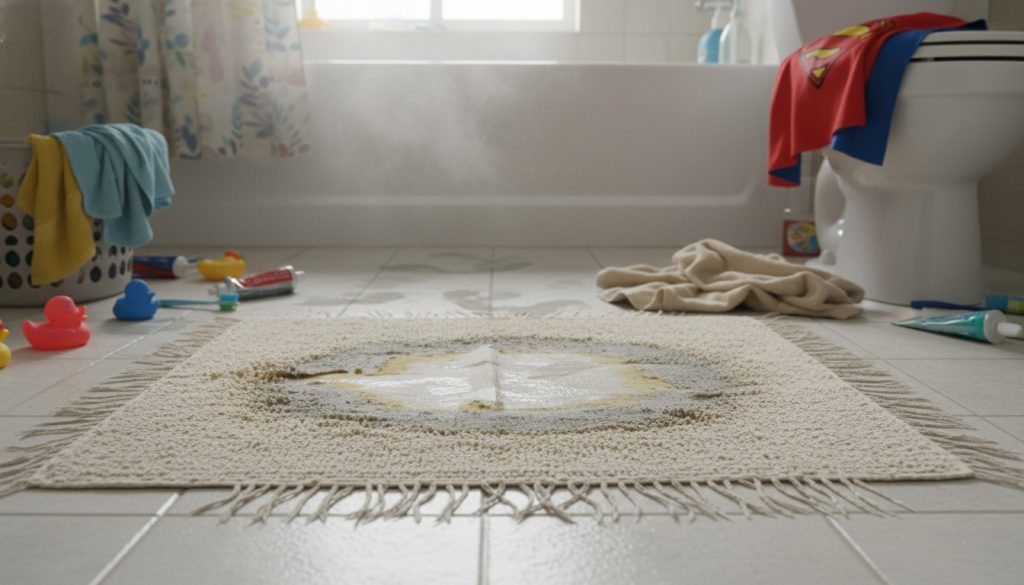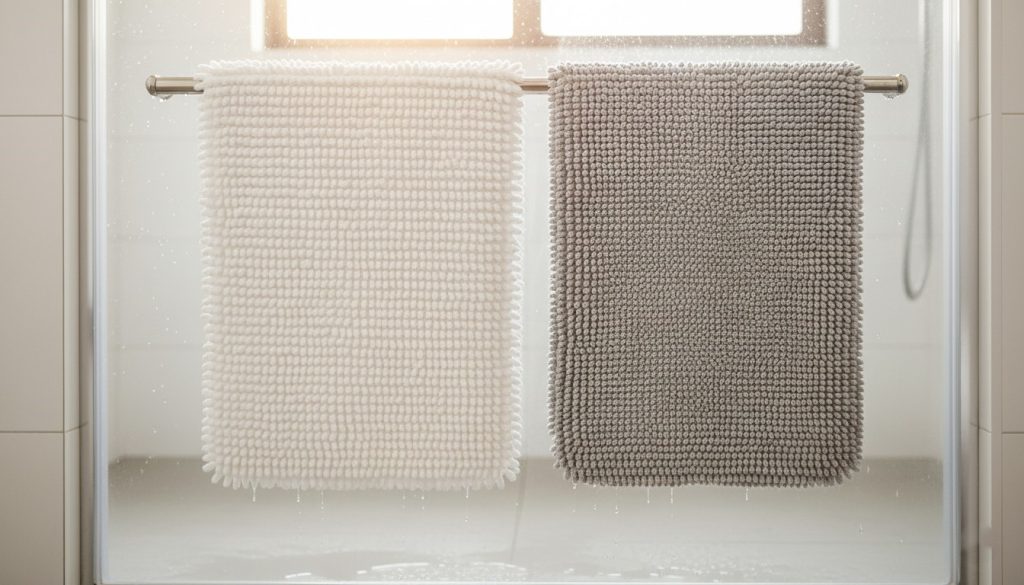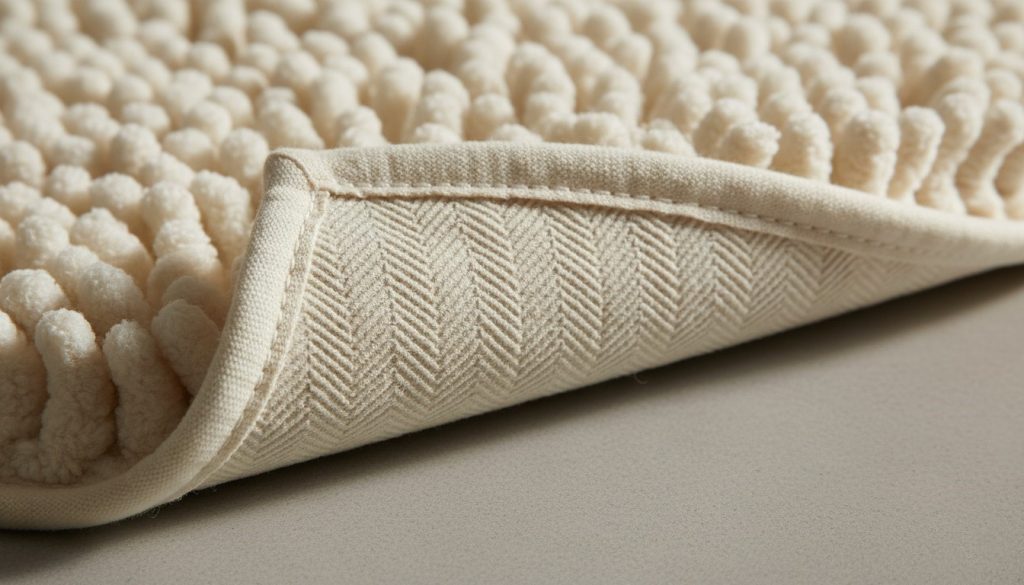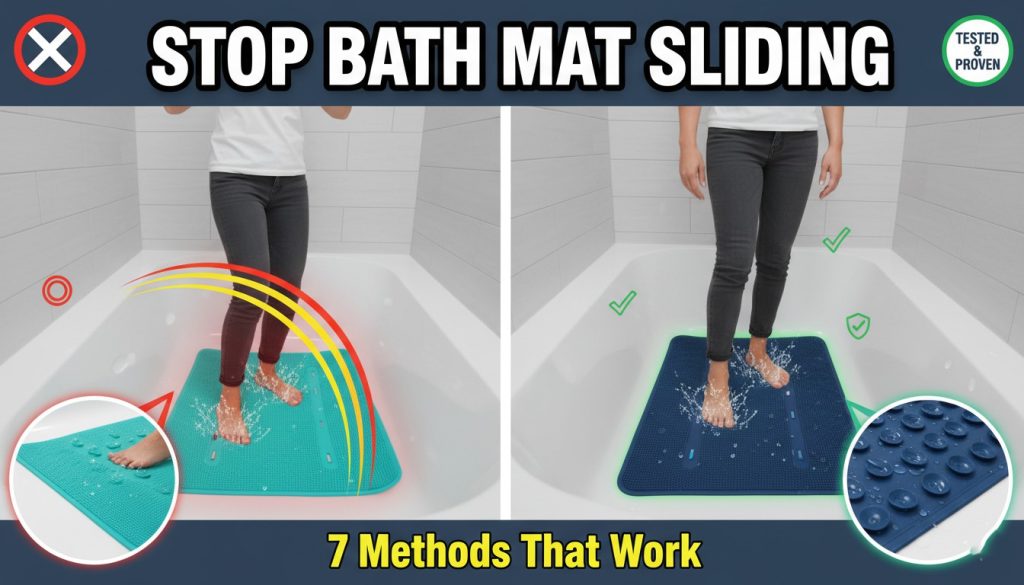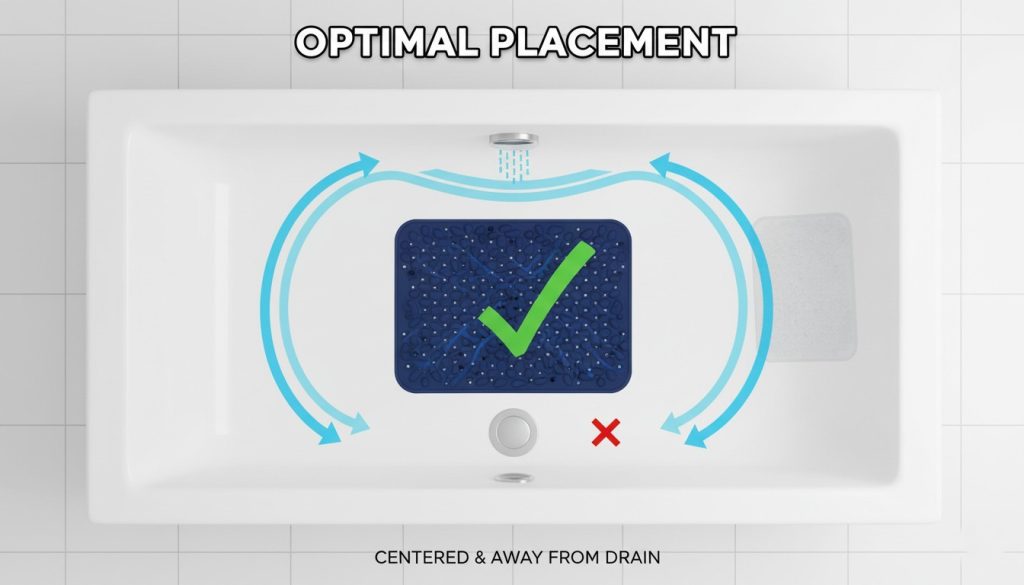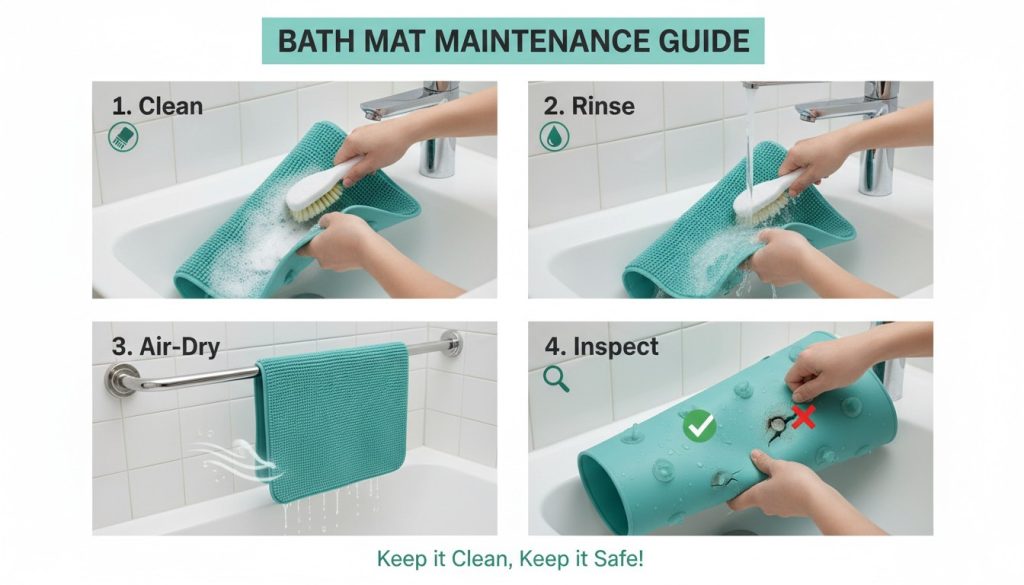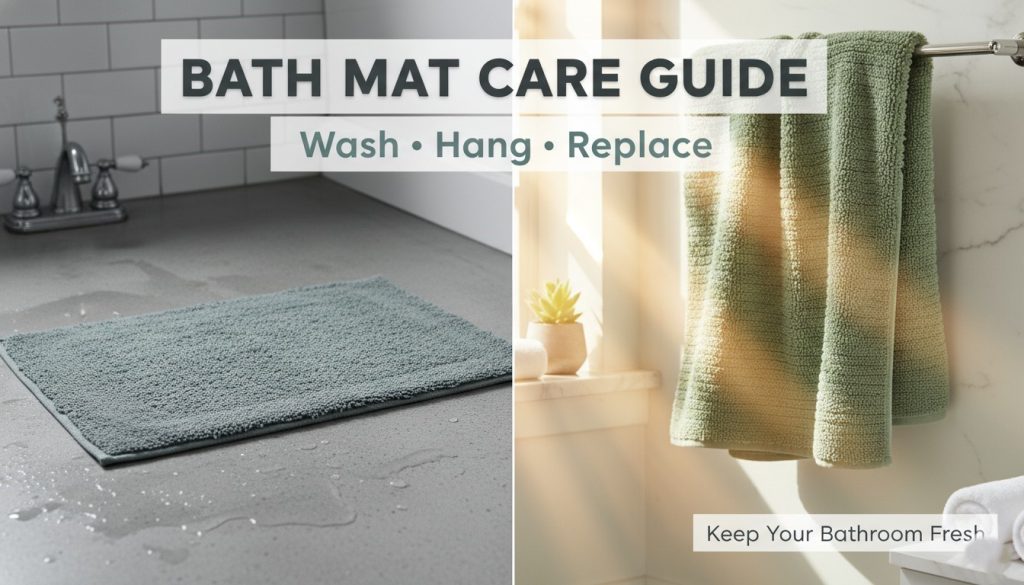
I’ll be honest—I never thought much about my bath mat until I noticed a musty smell coming from my bathroom that no amount of air freshener could mask. Turns out, that innocent-looking mat I stepped on every day was harboring more bacteria than I wanted to think about. That wake-up call sent me down a rabbit hole of research and experimentation, and I’ve learned some things the hard way so you don’t have to.
Your bath mat is one of the hardest-working items in your home. It catches dripping water, absorbs moisture from wet feet, and sits in one of the most humid rooms in your house. If you’re not giving it the attention it deserves, you might be creating the perfect environment for mold, mildew, and bacteria to throw a party. Let me walk you through everything I’ve learned about keeping bath mats fresh, clean, and actually hygienic.
Understanding Bath Mat Hygiene: Why It Matters
Here’s something that made me change my ways: I once left a bath mat down for two weeks straight without hanging it up. When I finally picked it up, the underside had dark spots that definitely weren’t there before. That’s when I realized my bathroom floor wasn’t getting proper air circulation, and my bath mat was essentially sitting in a perpetual state of dampness.
Bath mats are moisture magnets by design. Every time you step out of the shower or bath, they absorb water. In a humid bathroom with poor ventilation, that moisture never fully evaporates. Within 24-48 hours of continuous dampness, mold spores can start colonizing. I learned this the expensive way when I had to throw out a perfectly good mat because the mildew smell wouldn’t budge no matter how many times I washed it.
The health implications aren’t just about musty odors. Damp bath mats can harbor fungi that cause athlete’s foot, bacteria that trigger skin irritations, and allergens that affect people with respiratory sensitivities. My partner started getting persistent foot itchiness that cleared up within a week of implementing a proper mat care routine. Coincidence? I don’t think so.
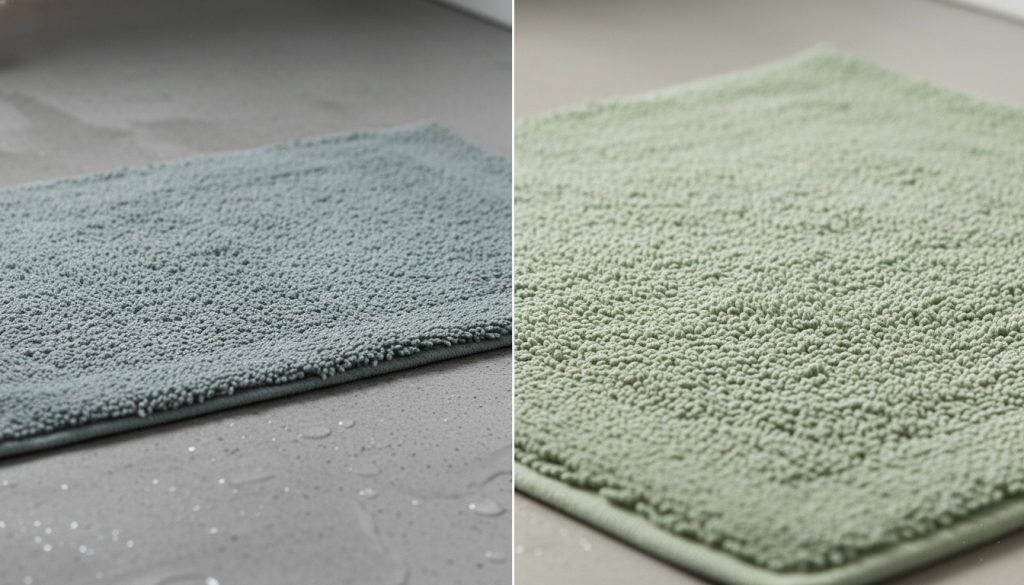
Should You Wash Bath Mats Before Use?
When I bought my current set of bath mats, I made the rookie mistake of pulling them straight from the package and putting them down. Big mistake. The first time I stepped on one with damp feet, I noticed it didn’t absorb water well at all—the moisture just sat on top. That’s because new bath mats often have manufacturing residues, fabric sizing, and protective coatings that actually repel water until you wash them.
Now I always pre-wash new mats before their debut. I’ve noticed that mats stored in warehouses can pick up dust and that plasticky smell from packaging materials. One quick wash cycle removes all of that and activates the mat’s full absorbency potential. For cotton mats, I use warm water with regular detergent. For rubber-backed ones, I stick to cold water to prevent the backing from degrading.
The difference is night and day. A pre-washed mat fluffs up beautifully and actually does its job from the first use. It’s a simple step that takes 30 minutes of your time but extends the life and performance of your mat significantly. I’ve also found that pre-washing helps set the colors, so you’re less likely to get dye transfer onto your bathroom floor.
Daily Care Routine: Simple Habits for Longer-Lasting Mats
This is where I’ve seen the biggest impact with the least effort. My daily routine takes about 30 seconds and has completely transformed how long my mats stay fresh.
Every morning after my shower, I pick up the bath mat and give it a good shake outside my bathroom door or over the tub. This dislodges any loose hair, dust, or debris that’s accumulated. Then I drape it over the side of the tub or hang it on a towel bar. At first, this felt like an annoying extra step, but it’s become as automatic as brushing my teeth.
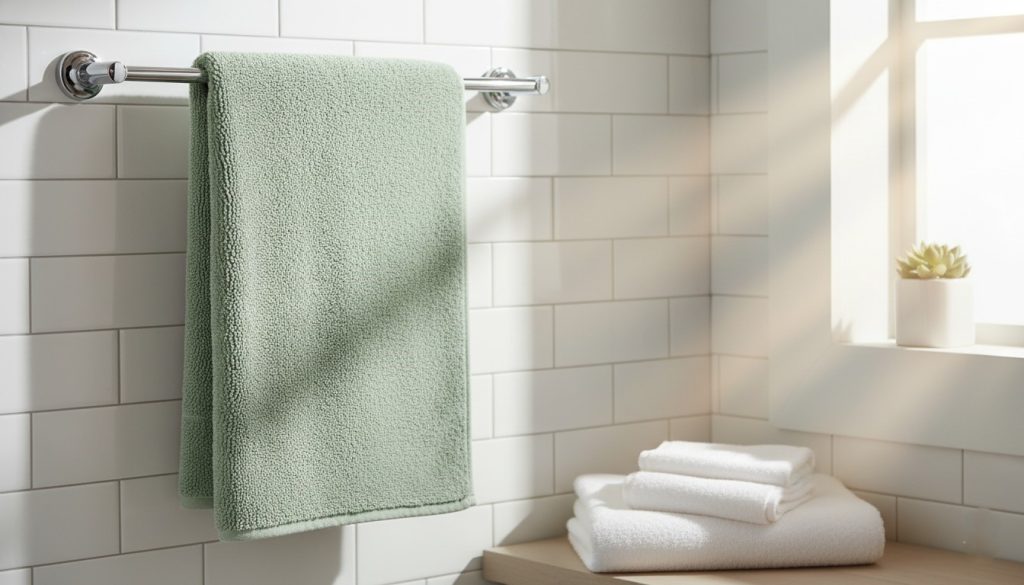
In the evening, if someone’s taken a shower, I repeat the process. The key is never leaving the mat lying flat on the floor for extended periods. I used to think this was overkill until I visited a friend’s house where their mat was permanently damp and slimy. The difference in texture and smell between their mat and mine was shocking.
For quick spot-cleaning, I keep a spray bottle with a 50-50 mix of water and white vinegar under my sink. If someone drips hair dye, toothpaste, or anything else on the mat, I spray it immediately and blot with a clean towel. This has saved me from countless stubborn stains that would have required a full wash cycle.
When to Remove/Hang Bath Mats After Use
Timing matters more than I ever realized. I used to leave my bath mat down all day, thinking it would eventually dry on its own. Wrong. In a typical bathroom with average humidity, a bath mat can take 4-6 hours to fully dry when left flat on the floor. That’s 4-6 hours of prime mold-growing conditions.
Now I hang my mat immediately after use—and I mean immediately. The moment I step off it, I pick it up and drape it somewhere with good airflow. My go-to spot is over the shower rod because the air circulation is excellent there. On days when I’m doing multiple loads of laundry, I sometimes hang it over my bedroom door to ensure it dries completely away from bathroom humidity.
For small bathrooms without much hanging space, I’ve gotten creative. I installed adhesive hooks on the back of my bathroom door specifically for mat storage. I’ve also used a standing towel rack in the corner. One friend uses a tension rod mounted high on the wall. The specific location matters less than the principle: get that mat off the floor and into moving air.
I’ve noticed that mats hung within 5 minutes of use dry about twice as fast as those left down for an hour. If you wait too long, the absorbed moisture starts to settle deeper into the fibers, making complete drying much harder. This small timing adjustment has probably doubled the lifespan of my current mats.
How Often to Wash Bath Mats?
This is the question everyone asks, and honestly, it depends on your household situation. I live with my partner, so our bath mat gets used twice daily on average. I wash ours once a week, and that schedule has worked perfectly for keeping things fresh without excessive wear from over-washing.
When I lived alone and showered once a day, I could stretch it to every 10 days without any issues. But when my in-laws visited for a week and we had four people using one bathroom, I had to wash the mat twice during that period. The more people, the more moisture accumulation, and the more frequent washing needs to be.
Here’s my smell test: if I pick up the mat and it has any musty odor whatsoever, it goes straight into the wash, schedule be damned. Other signs I look for include the mat feeling perpetually damp even after hanging, visible stains that daily care hasn’t removed, or the mat feeling stiff and crusty instead of soft and fluffy.
Households with pets need to wash more frequently. My sister has two dogs who love post-bath mat time, and she washes hers twice a week, minimum. Kids who take bubble baths that overflow onto the mat also increase washing frequency. During summer months when humidity is higher, I’ve found myself washing every 5-6 days instead of a full week.
One practical tip I’ve adopted: I own two identical bath mats and rotate them weekly. While one is in use, the other is either in the laundry or stored clean in my linen closet. This system means I always have a backup and never feel rushed to wash and dry a mat the same day.
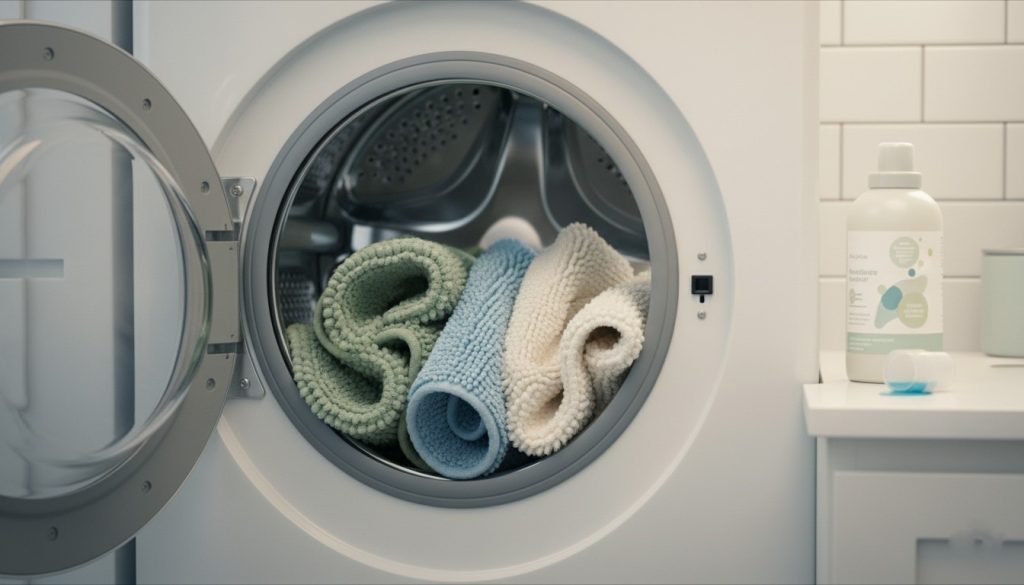
Proper Washing Techniques by Material Type
I’ve killed more bath mats than I’d like to admit by using the wrong washing methods. My first rubber-backed mat literally fell apart in the dryer because I used high heat. Lesson learned: material matters enormously.
For cotton and microfiber mats (which I now prefer), I use warm water on a regular cycle with my standard detergent. These materials are pretty forgiving. I add a half cup of white vinegar to the rinse cycle, which helps eliminate any lingering odors and keeps the fibers soft. They can handle the dryer on medium heat, though I usually air dry them if weather permits because it’s gentler.
Rubber-backed mats require more finesse. I always wash these in cold water on a delicate cycle. Hot water can cause the rubber backing to crack, bubble, or peel away from the fabric—I’ve seen this happen within three washes. For drying, I either hang them outside or lay them flat on a drying rack. The dryer is death to rubber backing, even on low heat. Trust me on this one.
Memory foam mats are the most high-maintenance in my experience. These need cold water and the gentlest cycle your machine offers. I never put these in the dryer, period. Instead, I squeeze out excess water by hand (don’t wring them), then lay them flat on a towel in a well-ventilated area. They take forever to dry—sometimes 24 hours—but it’s the only way to preserve their squishy comfort.
I learned the hard way not to overload the washing machine. Bath mats are heavy when wet, and cramming multiple mats plus other items prevents proper cleaning and can strain your machine. Now I wash one or two mats maximum per load with nothing else, and they come out significantly cleaner.
How Often to Change Bath Mats: Knowing When to Replace
Even with perfect care, bath mats don’t last forever. I’ve had to learn to recognize when it’s time to say goodbye, which isn’t always obvious.
A quality cotton bath mat should last 2-3 years with proper care. I’ve had cheaper ones give up after 8-10 months. Rubber-backed mats typically last 1-2 years before the backing starts deteriorating. Memory foam mats seem to last about 18 months before they start losing their shape and support.
The clearest sign it’s time to replace your mat is when it stops absorbing water effectively. I had a mat that would repel water droplets instead of soaking them up, even immediately after washing. That’s when the fibers have become so compacted and damaged that no amount of care will revive them. It’s like trying to dry yourself with a plastic bag—technically fabric, but functionally useless.
Other replacement indicators I watch for include persistent odors that survive multiple wash cycles, visible wear patterns where the mat has thinned out in high-traffic spots, fraying edges that are getting worse, and for rubber-backed mats, any cracking or peeling of the backing material. Once the backing goes, the mat becomes a slip hazard rather than a safety feature.
I recently threw out a mat that looked fine from the top but had developed permanent dark stains on the underside that I only discovered when rearranging my bathroom. That discoloration indicated deep-set mold that had penetrated beyond what washing could address. It’s unsettling, but better to replace it than ignore a potential health hazard.
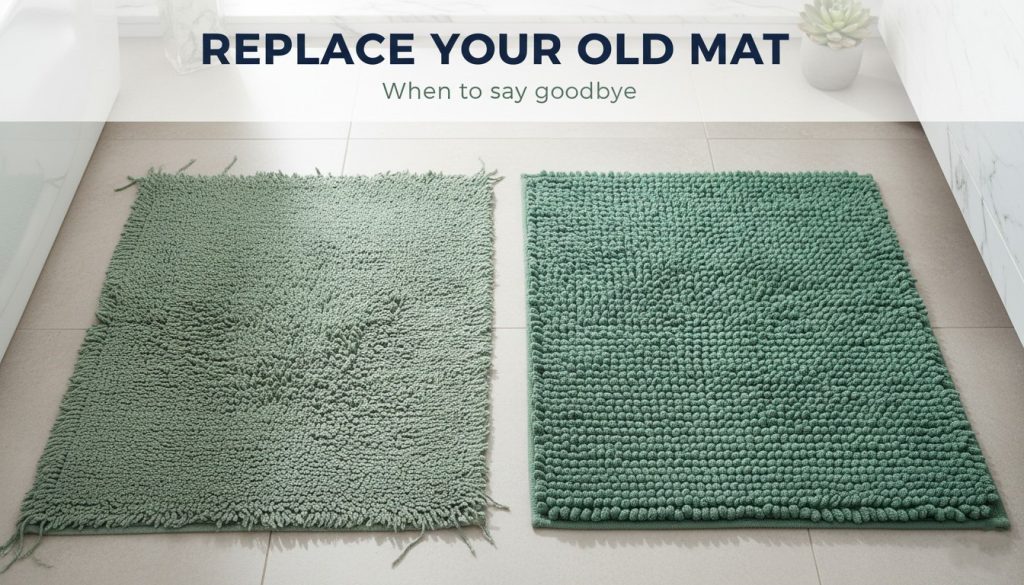
Creating Your Personalized Bath Mat Maintenance Schedule
After years of trial and error, I’ve developed a system that works without feeling burdensome. I keep a simple checklist on my phone that sends me weekly reminders.
My weekly routine includes washing the bath mat every Sunday morning (I time it with bedding day so everything laundry-intensive happens at once), checking for any stains or damage that might need attention, and rotating to my backup mat. Monthly, I do a deeper inspection where I actually flip the mat over and examine the underside for any discoloration, and I check that any adhesive hooks or hanging systems are still secure.
Every three months, I evaluate whether the mat is still performing well or showing signs it might need replacing soon. This quarterly check-in has helped me budget for replacements instead of being caught off-guard when a mat suddenly fails.
The key is adapting this to your lifestyle. If you travel frequently and only shower at home a few times a week, you might wash every two weeks instead. If you have teenagers who take marathon showers, you might need to wash every five days. I’ve learned to pay attention to how my bathroom smells and how the mat feels underfoot—those are better guides than any rigid schedule.
Common Mistakes to Avoid
Let me share the mistakes I’ve made so you don’t repeat them. I once got obsessive about cleanliness and started washing my bath mat every three days. Within two months, the fibers were noticeably worn down and the colors had faded significantly. Over-washing causes premature aging—weekly is sufficient for most households.
Using too much detergent is another trap I fell into. I figured more soap meant cleaner mats, but actually, excess detergent builds up in the fibers and makes them feel stiff and scratchy. Now I use about half the recommended amount for a regular load, and my mats come out softer.
The biggest mistake, though, was using fabric softener. I thought it would make my mats fluffier, but fabric softener leaves a coating on fibers that reduces absorbency. My mat was so soft but completely useless at soaking up water. I had to wash it three times with just vinegar to strip out the residue. Skip the fabric softener entirely for bath mats.
Ignoring care labels seemed harmless until I shrank a beautiful bath mat set by washing in hot water when the label specifically said cold. Those labels exist for a reason—manufacturers know their products better than we do. Taking 10 seconds to check the tag has saved me money and frustration.

Wrapping It All Up
Looking back at my bath mat journey (yes, I just wrote that sentence), the transformation in my bathroom hygiene has been remarkable. That musty smell is gone, my mats last longer, and I feel better knowing I’m not stepping onto a bacteria farm every morning.
The core principles are simple: hang your mat after every use, wash it weekly in most cases, use the right techniques for your mat’s material, and replace it when it stops doing its job effectively. These aren’t complicated or time-consuming habits—they’re just intentional.
Start small if this feels overwhelming. Just begin hanging your mat to dry instead of leaving it on the floor. That one change alone will make a noticeable difference within a week. From there, you can build in the washing schedule and other refinements.
Your bathroom deserves to be a fresh, clean space, and your bath mat plays a bigger role in that than most people realize. Give it the care it needs, and it’ll serve you well while keeping your bathroom genuinely hygienic. Trust me—once you experience the difference a properly maintained bath mat makes, you’ll never go back to your old habits.
